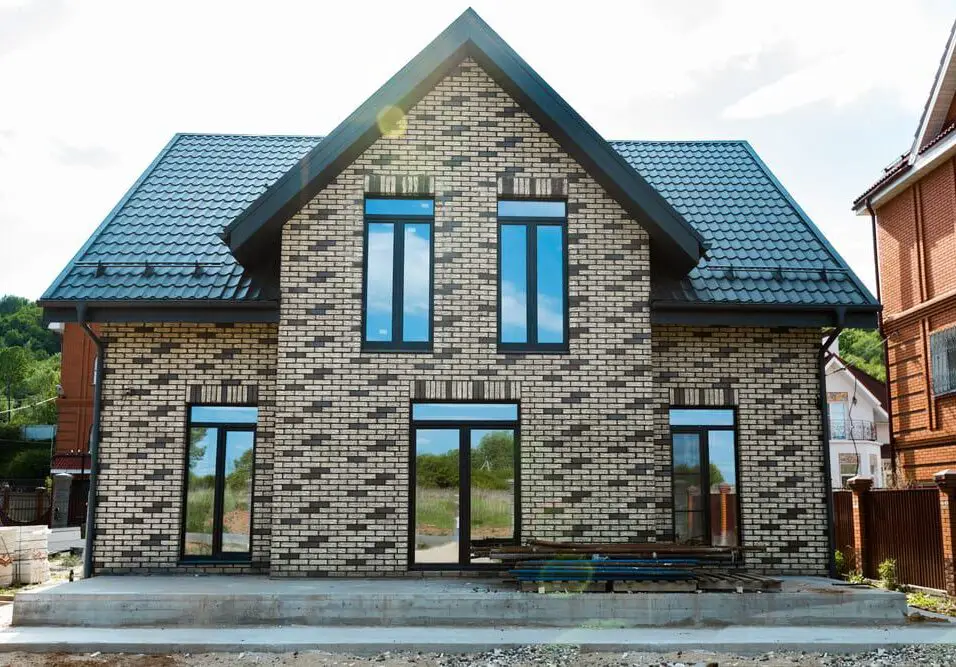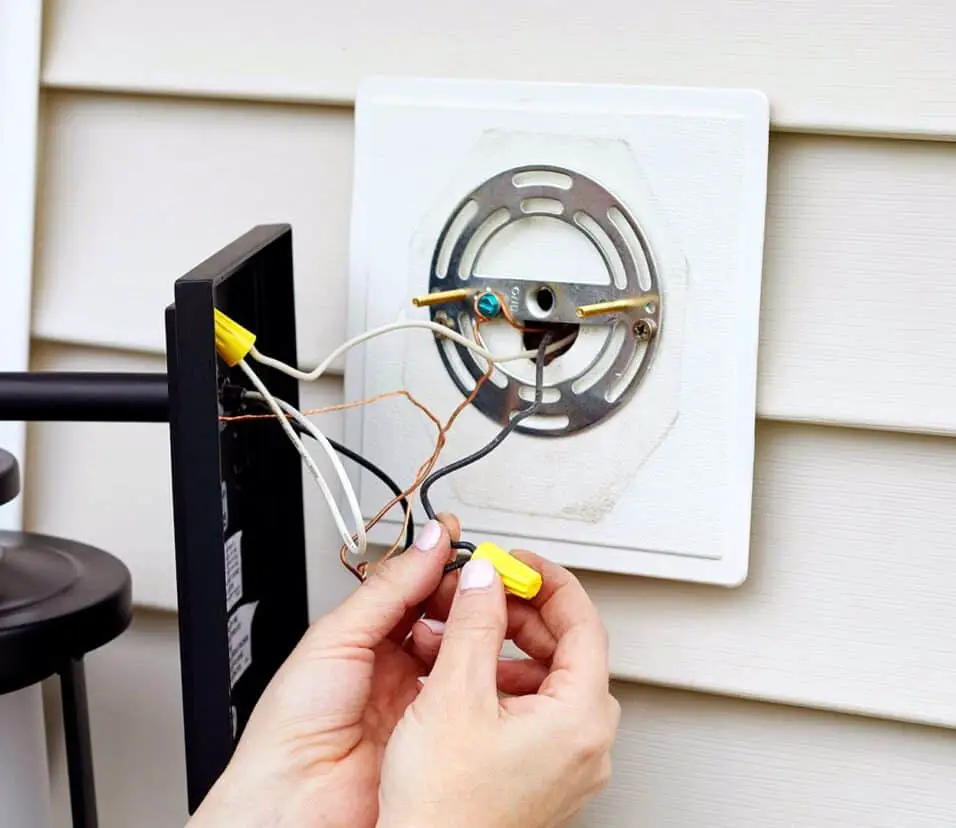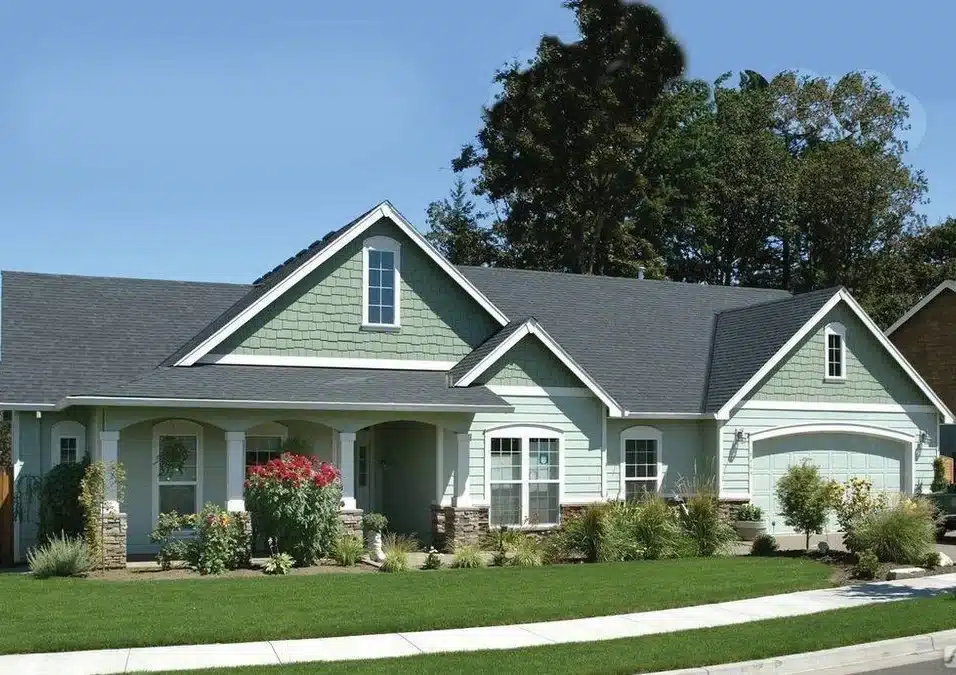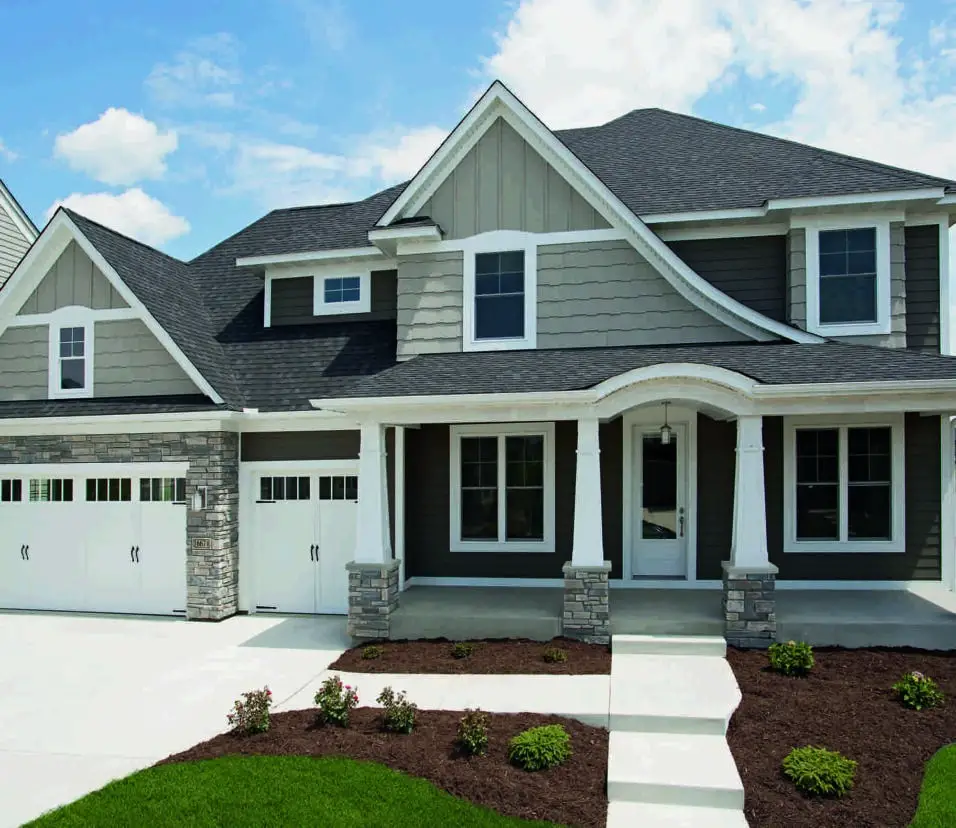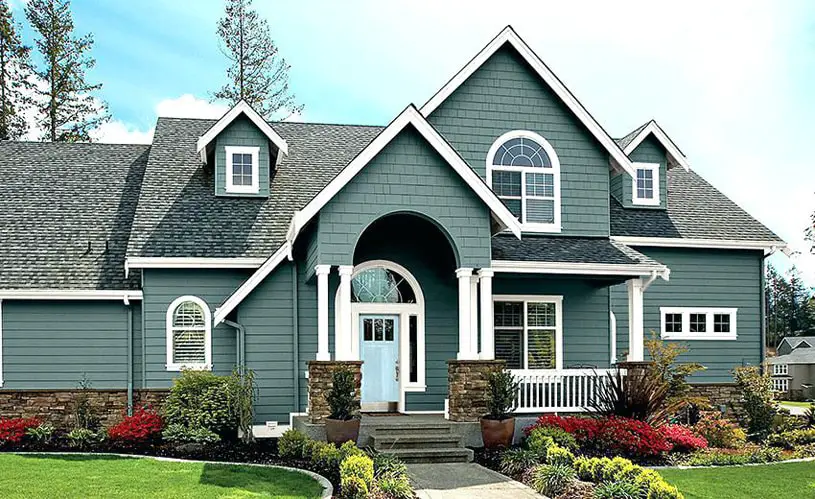How Often Should You Paint Your House Exterior
Introduction
How Often Should You Paint Your House Exterior: The question of how frequently to paint your house exterior is more than a matter of aesthetics – it’s a pivotal aspect of responsible homeownership. Your home’s outer shell encounters the elements daily, battling sun, rain, wind, and fluctuating temperatures. As such, understanding the optimal timeline for exterior paint maintenance is paramount in ensuring both its visual appeal and robust constitution.
In this comprehensive exploration, we delve into the factors that influence the recommended frequency of house exterior painting. From the type of siding materials used to the geographical location and prevailing climatic conditions, a multitude of variables interplay to determine the ideal schedule. Moreover, the quality of previous paintwork and the specific products utilized also impact how long the exterior paint will endure.
By unraveling these intricate layers of consideration, you will not only gain insight into the technical aspects of paint durability but also learn how to harmonize practicality with your aesthetic aspirations. Whether you’re aiming to revive your home’s allure or striving to protect its foundational essence, this guide will equip you with the knowledge to make informed decisions about painting intervals, ensuring that your home remains a beacon of beauty and strength for years to come.
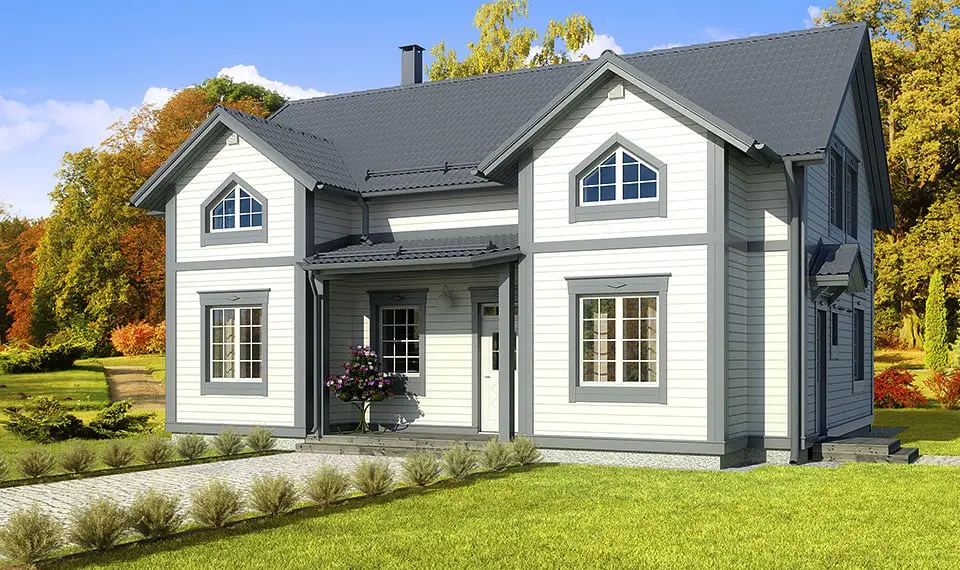
How long should you repaint your house?
On average, you should paint your house every four to six years, but some surfaces may need to be painted every three years, while other surfaces can get away with a paint job every 10 years. Surfaces like wood siding need to be repainted more frequently than vinyl siding or brick.
The frequency at which you should repaint your house can vary based on several factors, including the type of paint used, the climate in your area, and the overall condition of the existing paint. Here are some general guidelines to help you determine when to repaint your house:
- Exterior Repainting:
- Every 5 to 10 years: High-quality exterior paint jobs, when applied correctly, can typically last for about 5 to 10 years. However, this lifespan can be significantly affected by the climate in your region. Houses in areas with harsh sunlight, extreme temperature fluctuations, or heavy rainfall may require more frequent repainting, potentially every 5 years or even sooner.
- Regular Inspections: Regardless of the time frame, it’s essential to conduct regular inspections of your home’s exterior. Look for signs of paint deterioration, such as peeling, cracking, or fading. If you notice any of these issues, it’s a good indication that it’s time to repaint those areas.
- Interior Repainting:
- Every 7 to 10 years: Interior paint typically lasts longer than exterior paint. In most cases, you can expect the interior paint to maintain its quality and appearance for around 7 to 10 years. However, this can vary based on factors like the quality of the paint, the level of traffic in the room, and exposure to moisture and sunlight.
- High-Traffic Areas: Rooms with high levels of activity, such as kitchens and hallways, may require more frequent repainting, possibly every 3 to 5 years.
- Regular Maintenance: Proper cleaning and maintenance can extend the life of your interior paint. Wipe down walls as needed to remove dust and stains, and address any issues promptly to prevent them from worsening.
Ultimately, the decision to repaint your house should be based on a visual assessment of the paint’s condition, rather than a strict timeline. If you notice signs of wear and tear, it’s advisable to schedule repainting to protect your home’s appearance and maintain its value. Additionally, consulting with a professional painter can provide valuable insights into the specific needs of your home’s paint job based on its unique circumstances.
Is 7 year old paint still good?
In particular, an unopened can of latex or acrylic paint lasts up to 10 years. For unopened paints that are oil-based or alkyd-based, the shelf life could be up to 15 years. Additionally, chalk paint has a shorter lifespan from 1-3 years, and milk paint only lasts 1-2 weeks after its mixed.
Whether 7-year-old paint is still good depends on various factors, including the type of paint, the conditions it has been exposed to, and its overall condition. Here are some considerations to help determine the quality of 7-year-old paint:
- Paint Type: The type and quality of paint used initially play a significant role. High-quality paints tend to have better longevity. If you used a premium paint brand and it was applied correctly, the paint may still be in good condition after 7 years.
- Exposure to Elements: The environment the paint has been exposed to matters. If the paint is on an interior wall where it’s protected from harsh weather conditions and direct sunlight, it is more likely to remain in good condition compared to exterior paint, which is subjected to more environmental stress.
- Maintenance: Regular maintenance and cleaning can extend the life of paint. If you’ve taken care of the painted surfaces and cleaned them as needed over the years, the paint may still look good.
- Signs of Wear: Inspect the painted surfaces closely for signs of wear and tear. Look for issues like peeling, cracking, fading, or discoloration. If you notice any of these problems, it might be time for a touch-up or repaint.
- Color and Aesthetics: Consider your aesthetic preferences. Over time, your style may change, or you might want to refresh your living space with a new color. In such cases, the age of the paint may not matter as much as your desire for a different look.
In summary, 7-year-old paint can still be good, especially if it’s high-quality interior paint that has been well-maintained. However, it’s essential to evaluate the paint’s condition and consider your aesthetic preferences when deciding whether to keep or replace it. If the paint is showing signs of wear or if you’re ready for a change in color, it may be a good time to consider repainting the surfaces in question.
How often should I repaint my walls?
every 3-5 years
While it differs from room to room due to varying degrees of traffic and usage, the general rule is you should repaint your house interior every 3-5 years. Keep in mind that not every household is the same. Maybe you rarely use your dining room except for the holidays.
The frequency of repainting interior walls largely depends on the type of paint used, the amount of wear and tear, and personal preferences. In general, interior paint can last around 7 to 10 years, but it’s essential to consider factors such as the number of occupants, level of activity in the room, and exposure to moisture. High-traffic areas like hallways and kitchens may require more frequent repainting, perhaps every 3 to 5 years. Bathrooms, where moisture levels are higher, may also need more frequent attention. If the paint starts to show signs of wear, like chipping, cracking, or fading, it’s a good indication that it’s time to repaint. Additionally, if your style preferences change, you might choose to repaint sooner for a fresh look. Regular cleaning and maintenance can extend the life of your interior paint, so be sure to wipe down walls as needed to remove dust and stains.
How often should you touch up house paint?
every five to 10 years
Repaint Schedule
To maintain a rental’s appeal, many professional painters recommend painting walls every five to 10 years. High-traffic areas — hallways, corridors, stairways, entryways, bathrooms, and kitchens — receive more wear and tear and, therefore, need to be refreshed fairly often.
Touching up house paint is a proactive way to keep your home looking its best between full repainting projects. The frequency of touch-ups depends on factors like the quality of the paint, the climate, and the level of wear and tear. As a general guideline, you might consider doing touch-ups every 2 to 3 years for interior walls and trim, especially in high-traffic areas. For exterior paint, touch-ups might be needed every 1 to 2 years, or even more frequently if you live in an area with harsh weather conditions. Pay special attention to areas that are more susceptible to wear, such as window sills, door frames, and baseboards. When doing touch-ups, make sure to use the same type and color of paint to ensure a seamless finish. Regular touch-ups not only maintain your home’s appearance but also help protect it from damage caused by weather and daily use.
How many times should you repaint a wall?
While five to 10 years is generally a good window, there are some obvious factors that might cause you to repaint your walls more frequently. Firstly, think about the room in question. Does it see a lot of activity, or is it room you use less often?
The number of times you should repaint a wall depends on several factors, including the condition of the existing paint, the quality of the new paint, and your aesthetic preferences. In most cases, a single coat of paint is sufficient for a wall that is in good condition and already has a suitable base color. However, if the existing paint is heavily stained, discolored, or damaged, you may need to apply more than one coat. Additionally, if you’re changing the wall color significantly, you might require multiple coats to achieve the desired result. Typically, two coats of paint are recommended for a color change or to ensure even coverage, especially with lighter colors over darker ones. Ultimately, the number of times you repaint a wall is a subjective decision based on the specific situation and your desired outcome.
How many coats of primer?
You will want to use 2-3 coats of primer to ensure there is a good bond between the new paint and the wall, and also to cover up any previous colors, especially if they are red, orange, or a strange outdated color. In short, you will typically need 2 coats of primer for most painting projects.
The number of coats of primer needed depends on the surface you are painting and the condition of that surface. In most cases, one coat of primer is sufficient. Primer serves as a bonding agent between the surface and the paint, creating an even base for the paint to adhere to. However, there are situations where additional coats of primer may be necessary. For example, if you’re painting over a surface with a lot of stains or discoloration, a second coat of primer can help cover these imperfections and prevent them from bleeding through the paint. Additionally, if you’re painting a porous surface like bare wood or drywall, you may need two coats of primer to ensure proper coverage. Ultimately, the decision of how many coats of primer to apply should be based on the condition of the surface you’re painting and the recommendations of the paint manufacturer.
How many coats of paint after primer?
two coats
On a new wall, you’ll want to follow the rule and apply two coats of paint after primer. Follow the same standard for drywall. If you’re repainting a wall, you’ll only need one coat if you’re using the same color and it’s a quality paint.
Generally, two coats of paint are recommended after applying a primer. The first coat of paint serves as the base or undercoat, and the second coat provides the final, even finish. This two-coat approach ensures that the paint color is consistent, hides any imperfections or variations in the surface, and provides better durability and longevity for the paint job. However, in some situations, a single coat of paint over primer may suffice, especially if you’re using a high-quality paint that offers excellent coverage. When painting with darker colors or making a significant color change, it’s advisable to use two coats to achieve the desired depth and evenness in color. Additionally, high-traffic areas or surfaces exposed to moisture may benefit from the added protection and coverage of two coats of paint. Always follow the paint manufacturer’s recommendations for the specific product you are using, as some paints may have different coverage capabilities that affect the number of coats required.
How many coats of paint when repainting?
two coats
How many coats of paint do I need? Generally, you will want a minimum of two coats of paint – this is a good rule of thumb for any wall or ceiling you’re painting. You’ll rarely get a seamless finish from just one coat of paint, and even if you do, coverage isn’t the only goal when it comes to painting a room.
When repainting a surface, the number of coats of paint required can vary depending on the condition of the existing paint and the color you are applying. In most cases, if the existing paint is in good condition and you’re using the same color or a similar shade, one coat of paint may be sufficient to refresh the surface. However, if you’re changing the color significantly, you’ll likely need two coats to achieve a consistent and even finish. Darker colors, in particular, may require more coats to fully cover the previous color.
It’s essential to evaluate the condition of the existing paint. If it’s chipping, peeling, or showing signs of wear, it’s a good practice to sand and prime the surface before applying the new coats of paint. This can help ensure better adhesion and a smoother finish. Ultimately, the number of coats when repainting depends on the specific circumstances, but it’s generally recommended to follow the two-coat approach for a thorough and long-lasting paint job. Always refer to the paint manufacturer’s guidelines and recommendations for the best results.

Conclusion
The question of how often to paint your house exterior transcends mere aesthetics; it’s a proactive investment in preserving the very essence of your home. As we’ve explored the variables that influence this decision, it’s evident that there’s no one-size-fits-all answer. Rather, it’s a dynamic equilibrium between environmental factors, material quality, and diligent maintenance.
Regularly scheduled exterior painting not only revives your home’s curb appeal but also safeguards it against the relentless forces of nature. Just as a suit of armor shields a warrior, a well-maintained coat of paint shields your home, preventing moisture intrusion, structural deterioration, and the gradual wear that time imposes.
By heeding expert recommendations and observing telltale signs of fading or peeling paint, you proactively extend the life of your home’s exterior surfaces. Embracing this process isn’t merely about aesthetics, but a commitment to nurturing your property’s value and character.
So, whether it’s the captivating charm of a freshly painted house exterior, the reassurance of a fortified structure, or the gratification of prudent maintenance, the journey to determining the ideal painting interval empowers you to be the steward of your home’s beauty and resilience. As seasons change and years pass, remember that the strokes of a paintbrush aren’t just embellishments – they’re a testament to your dedication to creating a harmonious abode, a place where both memories and walls stand the test of time.




